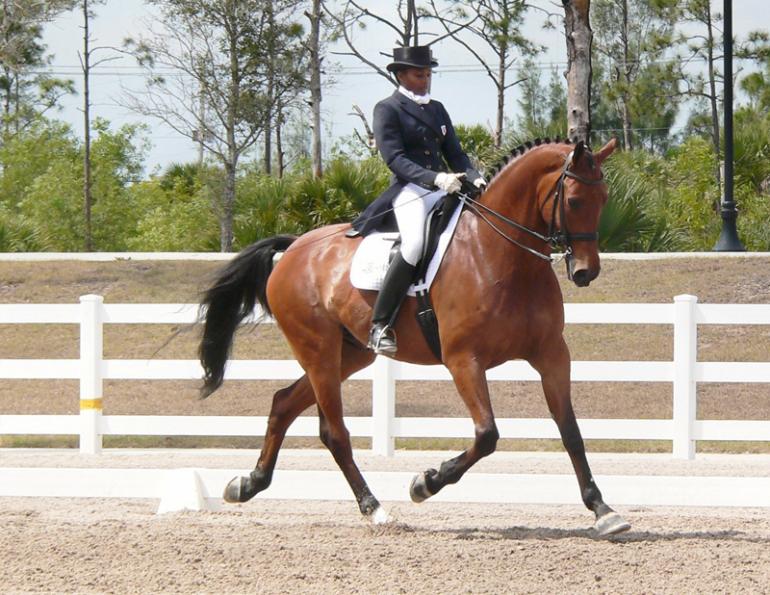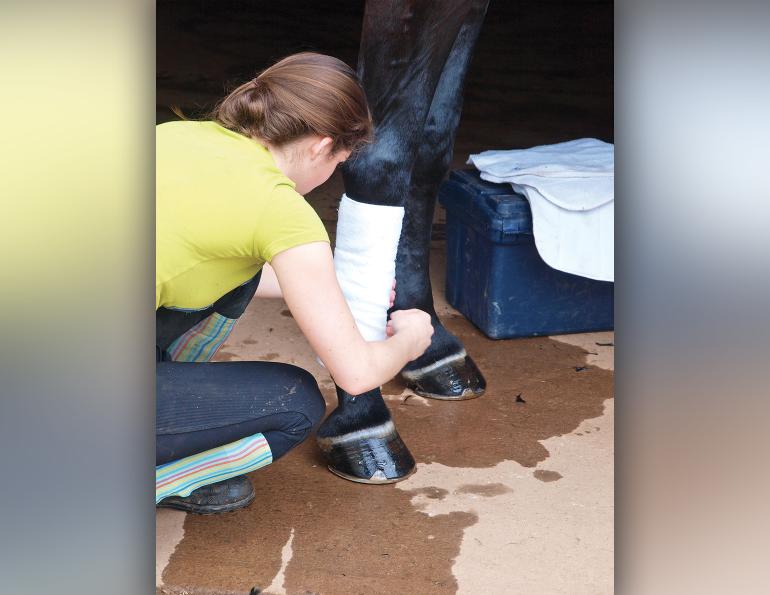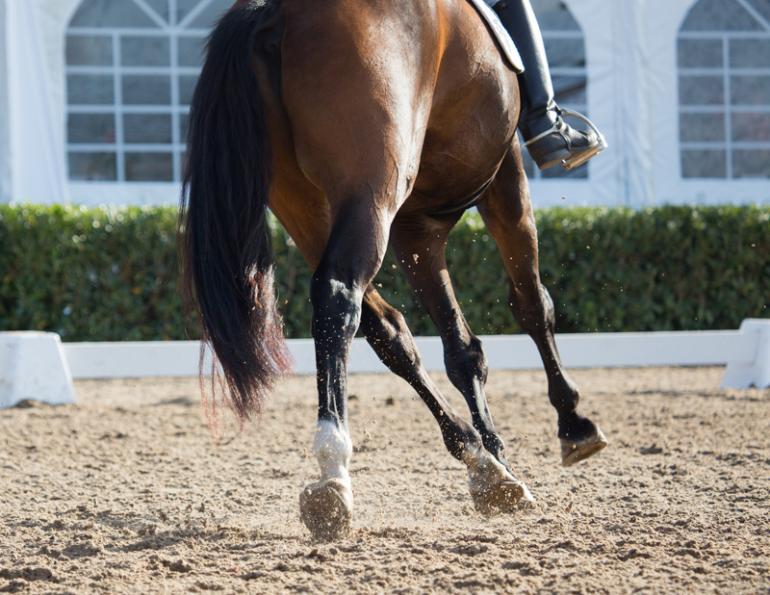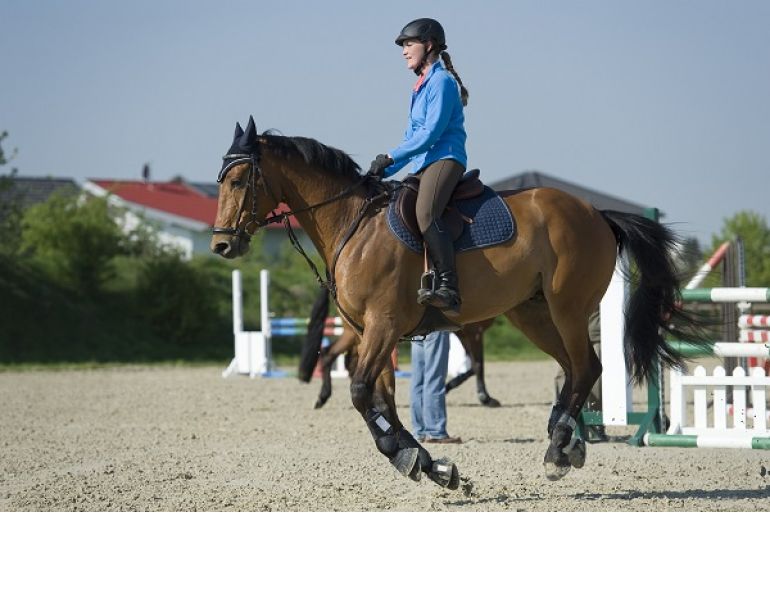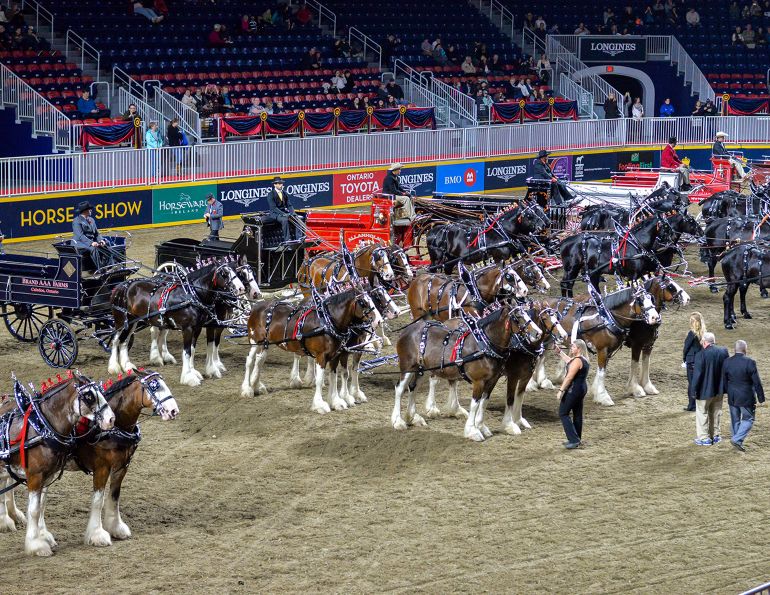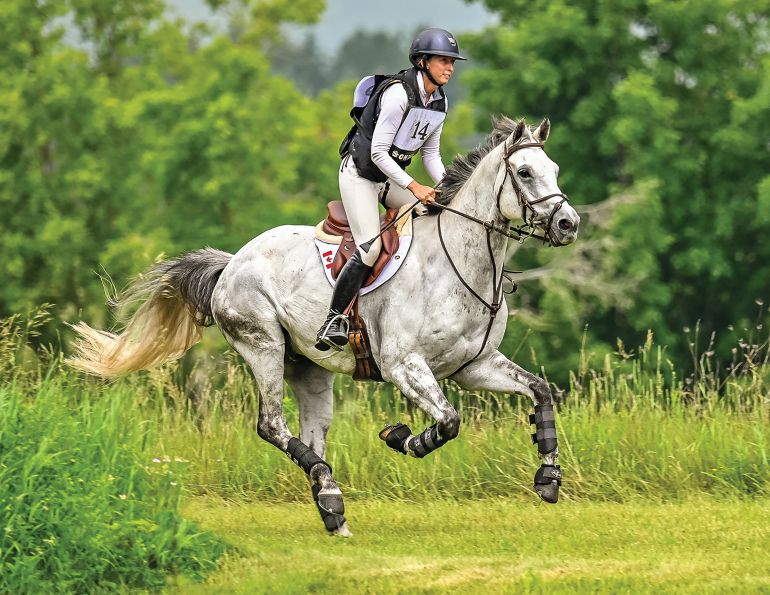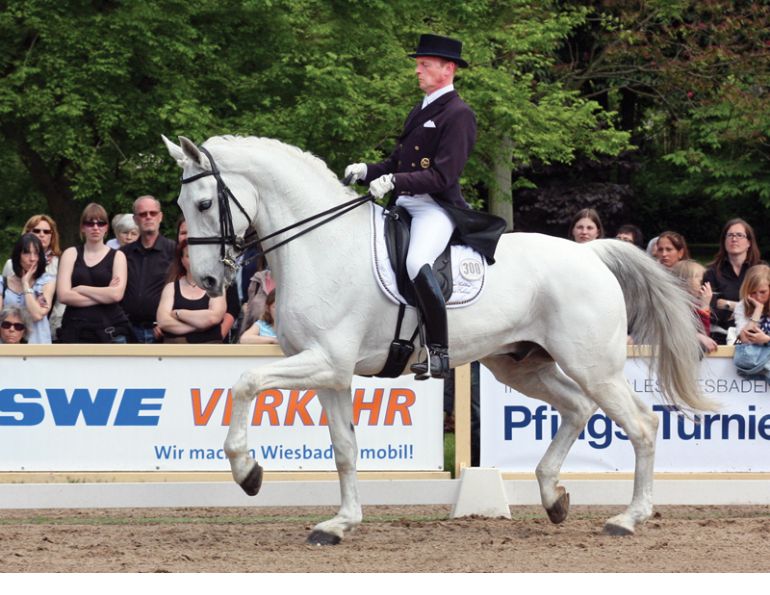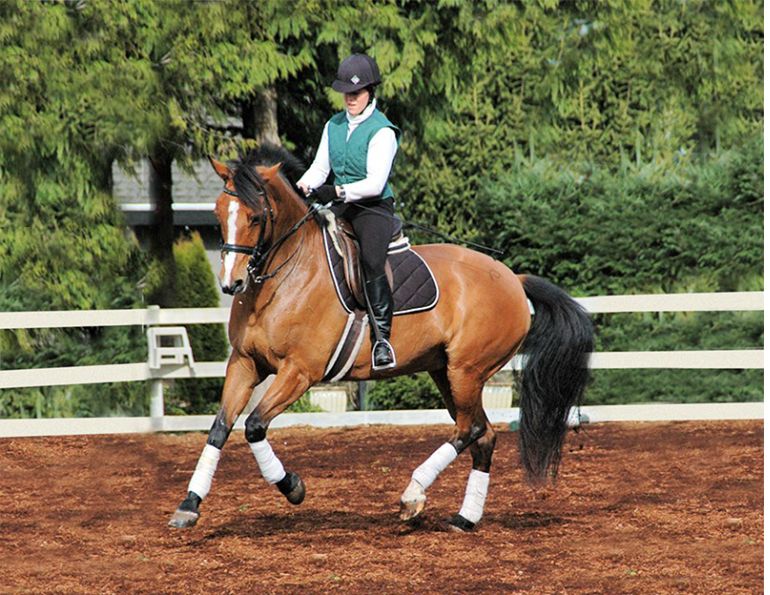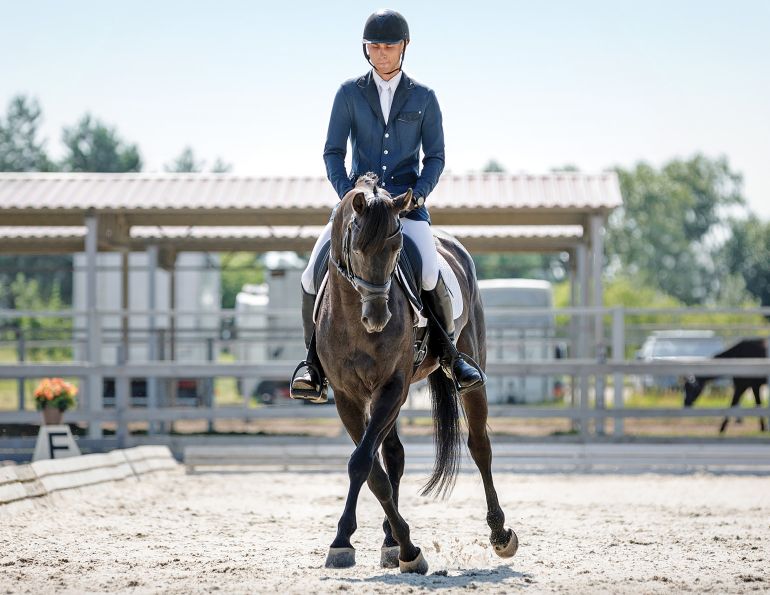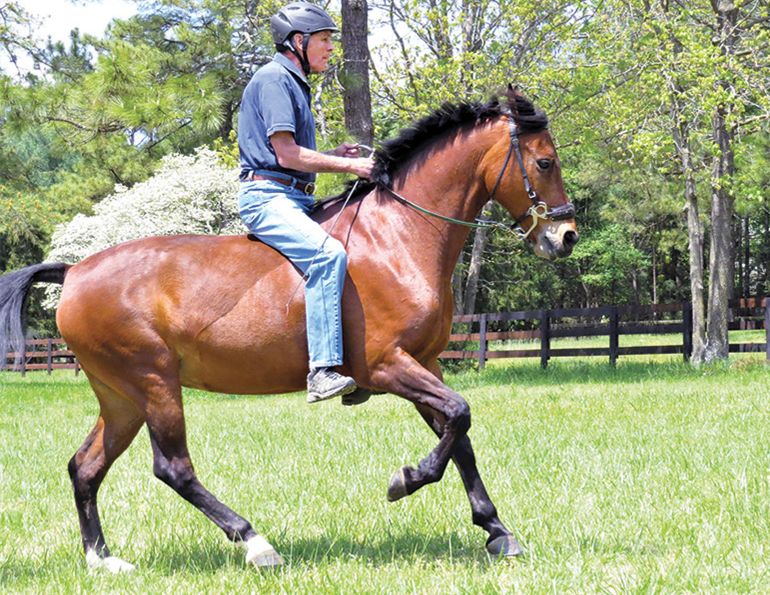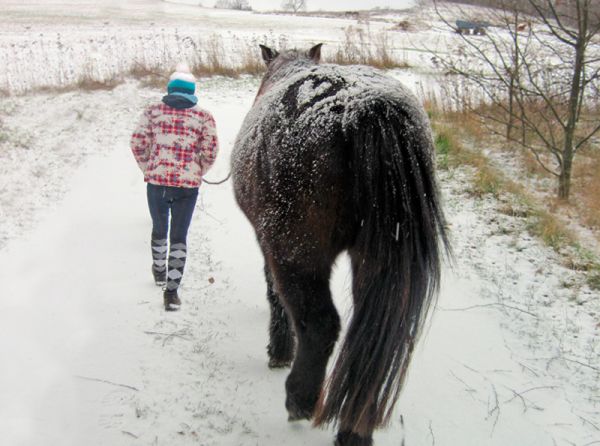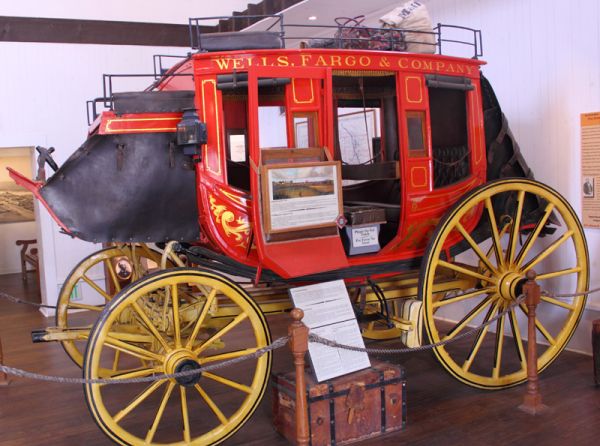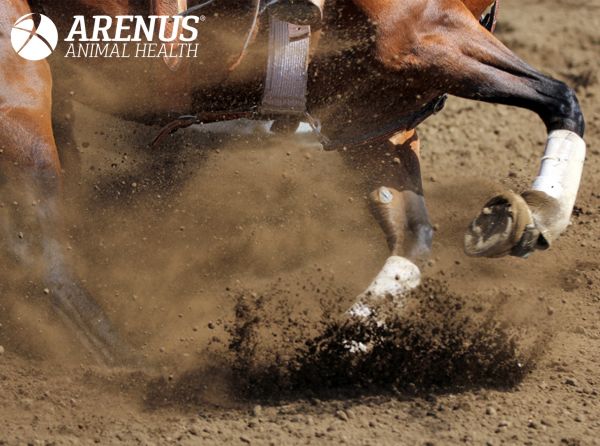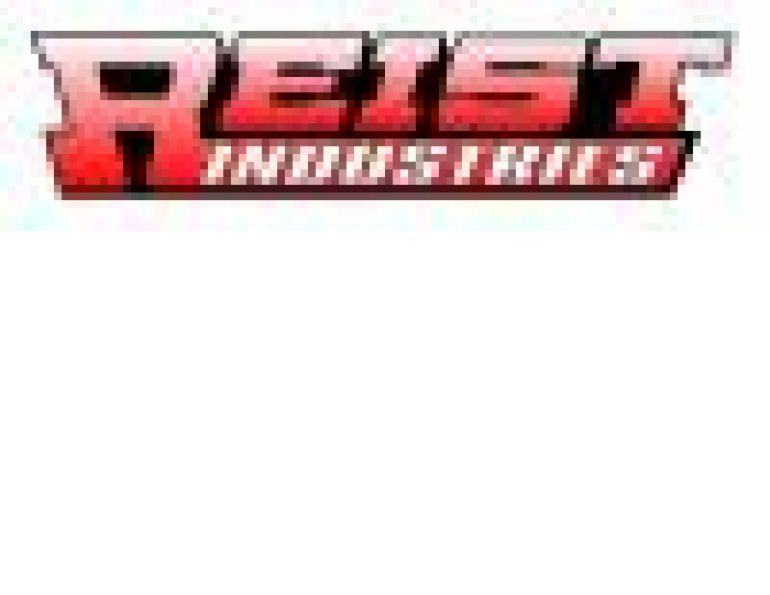With Bonny Bonnello
By Jess Hallas-Kilcoyne
The importance of contact in any discipline cannot be overstated. “Without contact, straightness is not possible, nor is good collection,” says dressage Olympian Bonny Bonnello. “Your aids, which include your upper body, legs, hands, and seat, combine to create the contact, which should be elastic.”
According to Bonny, good contact is critical to riding a correct half-halt, which is essentially just a rebalancing tool. Many riders might think that the half-halt is used exclusively in down transitions, but Bonny describes it as “all about connection from rear end to front end,” and uses it to improve her lengthenings.
“If you do a diagonal in lengthened trot, how many times does the horse lose his balance over X?” Bonny asks rhetorically. “If your horse is on your contact, on your half-halt, and on your aids, you can maintain balance through the most difficult part of the diagonal, which is that eight to ten metres across X.”
Here, Bonny explains how to use the half-halt within the lengthened trot across the diagonal.

Good contact allows a rider to half-halt and rebalance, even in the extended paces, without a loss of rhythm. Photo: Clix Photography
Exercise #1: Half-Halt within the Trot Lengthening
Begin in working trot and ride deep into the corner before the diagonal. “Your corners are the most important part of the arena because that’s where all the preparation happens,” says Bonny. “Each corner is an opportunity.” Half-halt as you enter the corner and “grow” coming out of the corner, allowing the energy you created with your half-halt to carry you forward into a lengthened stride.
Soften your hands forward to allow the horse’s frame to become slightly longer, but only slightly. “It’s only long compared to a piaffe!” Bonny explains. “If you lengthen the frame too much, the forehand gets heavier and the horse begins to run. Keep a contact and a rhythm. As soon as that goes, you have pushed the horse too fast and he’s running downhill. Then at the end of the lengthening you need to haul up and pull.” Instead, use your contact aids (upper body, legs, hands, and seat) to half-halt and think “ride up.” At no point should your hands take hold of the reins in a backward motion.
“They have to be going forward,” says Bonny, but she adds that the forward movement of the lengthening must exist in conjunction with balance and collection. The same concept applies in medium and extended work. “You need to have collection even in your medium trot,” she explains. “You’re not just throwing away your reins and saying ‘Let’s go!’ You need to half-halt within the medium or extension to maintain balance and rhythm.”
The quality of your lengthening depends on the elasticity through the body of the horse, which depends on the elasticity of the rein connection, or contact. “If you want to give a little bit, the horse should follow whatever you give,” Bonny says. “If you want to give one inch, they need to come into that one inch of contact gently…like stretching a bungee cord.”
Longitudinal and lateral elasticity occurs when the horse is balanced, rhythmical, and supple. This next exercise will test your ability to maintain all three.

Exercise #2: Half-pass, Leg-yield, Half-pass
In collected trot on the right rein, turn down the centreline at A. Prepare your horse by positioning him with a slight shoulder-fore, then half-halt and let the half-pass flow out of your half-halt. Aiming for M, ride three to four strides of half-pass right, then half-halt, change your flexion to the left, and ride three or four of leg-yield right. Half-halt again, re-establish bend and flexion to the right, and ride another half-pass right, finishing at M.
“The most important thing is that you decide where you’re going to go and commit to that line, stick to it, end up where you really want to end up,” says Bonny. “If you just let them go and say, ‘Well, I wanted to end up there but I ended up 20 metres down the wall,’ it’s not going to work. You have to be committed to your line. It’ll be a struggle for the first few times. Don’t go fast, just do it slowly until they finally become more comfortable with the exercise. If you are disciplined in riding perfect lines, you are giving your horse an opportunity to seek the contact.”
Bonny points out that going slowly can also make it easier for the rider to coordinate their aids, and encourages them to maintain half-halts.
“It doesn’t matter if your horse is resisting,” she says. “Hold with your core and don’t let him go beyond that line, because he’s going to want to. He might get a little strong but just hold and resist with your body and say ‘No, just stay here.’ They learn very, very quickly to stay with a half-halt and it connects them through their body, which is important for good contact.”
When you first start playing with transitions from half-pass to leg-yield to half-pass, keep the angle shallow with long, gradual lines. As your horse becomes stronger, you can change the angle of your line by riding to R or B instead of M.
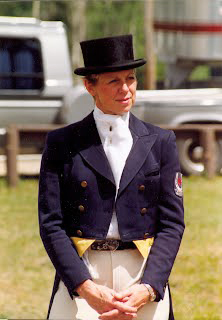
About Bonny Bonnello
Bonny Bonnello trained and showed in many disciplines including hunter, jumper, Western pleasure, eventing, and sidesaddle, before focusing on dressage. Riding Satchmo, she represented Canada at the 1984 Olympic Games in Los Angeles, and that same year was the winner of the Canadian Grand Prix Championship. In 1986, Bonny was a member of the silver medal winning team at the World Championships in Toronto. After her son, Billy, was born in 1987 Bonny focused her riding career closer to home by training horses and teaching riders. In 2003 Bonny started back into competition, and in 2004 she found Pikardi, a 1997 bay Canadian Warmblood gelding. Bonny competed with Pikardi at the 2010 World Equestrian Games in Kentucky. Now retired from the international show ring, Bonny concentrates on coaching, training, and giving clinics.
This article originally appeared in the August 2012 issue of Canadian Horse Journal as part of "3 Takes on Training: Connect with Contact."
Main article photo: Shutterstock/Perry Correll



